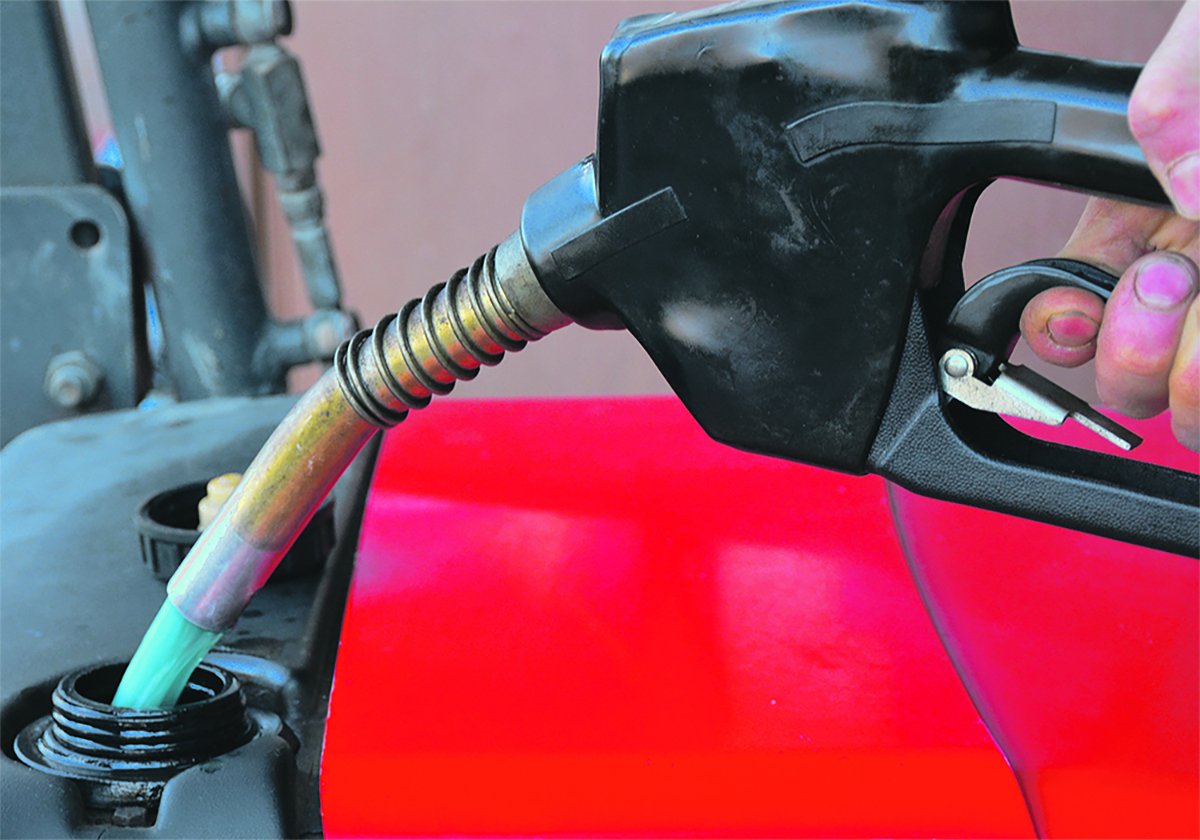Election promises of a federal renewable fuels mandate have topped up the tanks of ethanol and biodiesel enthusiasts.
“It’s great news for ethanol. It’s great news for Western Canada,” said Lionel LaBelle, president of the Saskatchewan Ethanol Development Council.
Doug Hooper, executive chair of Canadian Bioenergy Corp., the largest distributor of biodiesel in Western Canada, also welcomed the announcements made by the two front-runners in the federal election.
“It’s a major step to bring us into alignment with the direction that U.S. policy development is going,” he said.
Read Also

Alberta may eliminate marked fuel
Alberta may soon stop selling dyed gasoline and diesel.
The Liberal Party was the first out of the blocks with a Dec. 20 announcement that if re-elected it would introduce a national renewable fuels standard calling for a minimum five percent mix of ethanol and biodiesel at the pumps by the end of 2010.
One day later the Conservative Party made a similar commitment.
“It’s a real clear indication from both the major parties that they’re paying attention to this industry from a North American perspective and that they’re moving us toward parity with American and global policy,” said Hooper.
Governments around the world, including the European Union, the United States, China, India, Japan and Brazil, have all introduced renewable fuel content requirements, as have three Canadian provinces – Saskatchewan, Manitoba and Ontario.
Saskatchewan is the only jurisdiction in Canada where the standard is actually operational, with a one percent mandate that will rise to 7.5 percent by April.
LaBelle said provincial mandates are good but he doesn’t want 10 different rules designed to promote regional ethanol and biodiesel production to restrict the ability of a province like Saskatchewan to export its alternative fuels.
That is why he was delighted to see the Liberals and Conservatives unveil plans to establish national standards.
“From a Saskatchewan perspective the only way we can grow this ethanol industry is in our ability to export east and west,” said LaBelle.
A five percent blend would amount to two billion litres of ethanol nationally at today’s gasoline consumption rate. Plants would require about 200 million bushels of corn and wheat to produce that quantity of ethanol.
“These numbers represent the floor, not the ceiling. They reflect the minimum,” said LaBelle.
A five percent share of Canada’s 26 billion litre diesel market represents 1.3 billion litres of biodiesel by 2010.
At the end of 2004, Canada produced only about 240 million litres of ethanol.
“That’s a pretty tough growth curve,” said Hooper.
To fulfil the proposed mandate the biodiesel industry will need other incentives from the federal government to spur on capital investment, such as a program to mimic the ethanol expansion program, which allocated $118 million to projects across the country, he said.
Canadian Bioenergy Corp. is also pushing for a tax credit for petroleum distributors to encourage them to allow their pipelines to be used for moving biodiesel to market. That incentive has been the single biggest factor in getting volumes of the alternative fuel flowing in the U.S., said Hooper.
He believes both parties will live up to their promises if elected. The Liberals have already demonstrated an inclination to support the sector by removing the federal fuel excise tax on renewable fuels.
“Clearly the file is engaged,” said Hooper.
LaBelle agree this is one commitment that will see the light of day based on conversations he has had with politicians and officials.
“I genuinely believe there is a desire to get it done,” he said.
The New Democratic Party’s election platform calls for an ethanol use mandate of five percent by 2008 and 10 percent by 2010.















